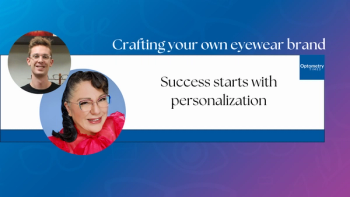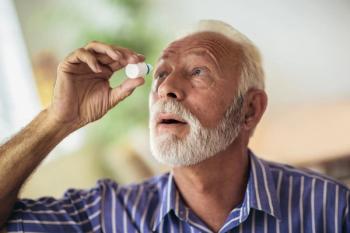
AAOpt 2024: Discussing Acuvue contact lenses over lunch
Christi Closson, OD, FAAO, provides insight on what other ODs learned about Johnson & Johnson's contact lens technology.
Christi Closson, OD, FAAO, recaps a luncheon event titled "Johnson & Johnson Vision Lunch & Learn: Eye Inspired Design - A Technology Driven Experience" that was held at the American Academy of Optometry meeting in Indianapolis, Indiana this year.
Video transcript:
Editor's note: The below transcript has been lightly edited for clarity.
Christi Closson, OD, FAAO:
Hi, my name is Dr Christi Closson, and I'm the associate director of Professional Education at Johnson & Johnson Vision. And yesterday, I was able to give an amazing talk on the Eye-Inspired technology across our platform of all Acuvue lenses. During our talk at lunch, we were able to really discuss some of the foundational elements and then some specific design elements that are in our specialty sections, in our toric and in our multifocal. So we were able to talk about our edge and what makes that different from any other lens on the market, as well as our moisture agent, which is again, different than anything else in the market. We were able to highlight our UV feature, which is unique and in every single Acuvue contact lens. And then I was able to go into our Blink Stabilized Design and our Pupil Optimized Design, again, both very specific for our specialty lenses, our [astigmatism] lenses, and our multifocal lenses.
I was able to talk to quite a few doctors afterwards. The interesting thing is, is that they don't know those differences. They kind of group things together, such as an astigmatism lens. They think that they all have a similar design that is based on gravity, and they didn't know the nuances with ours. And I got great feedback on our multifocal because our Pupil Optimized Design is so unique and different than anything else on the market. Other manufacturers, if they have a 2-ADD system, like a low and a high, they have 2 designs in their entire fit set, from that +6 to -9. And if they have a 3-ADD system, a low, mid and high, they have 3 designs. We have 183 designs, and everyone had the same light bulb moment. I had a few people respond while I was speaking, and when I asked them, "How many designs do you think we have?" And the highest number that someone gave was nine. So they definitely had an "aha" moment and did a lot of learning.
The key takeaways from Academy, this has been an amazing meeting. Everywhere that we have gone, we have been able to elevate what we do and talk about our advocacy, really show up to different sections, the CCLRT, I spoke today to the anterior segment section. Everyone has been so gracious and thankful for all of the support that we give as an industry partner, and they're really supportive of us in return. So it's great.
Newsletter
Want more insights like this? Subscribe to Optometry Times and get clinical pearls and practice tips delivered straight to your inbox.
















































.png)


